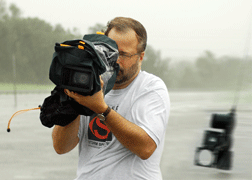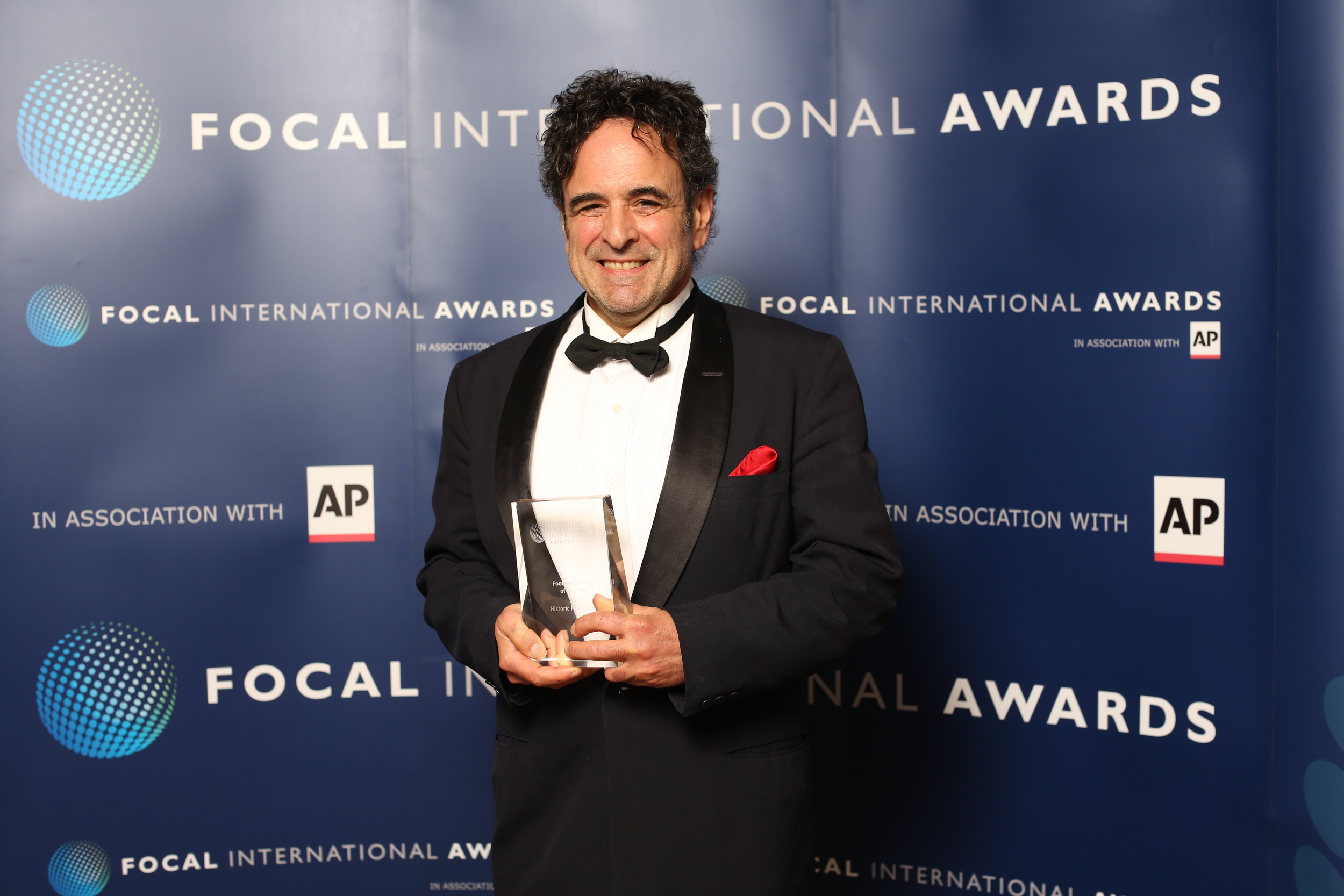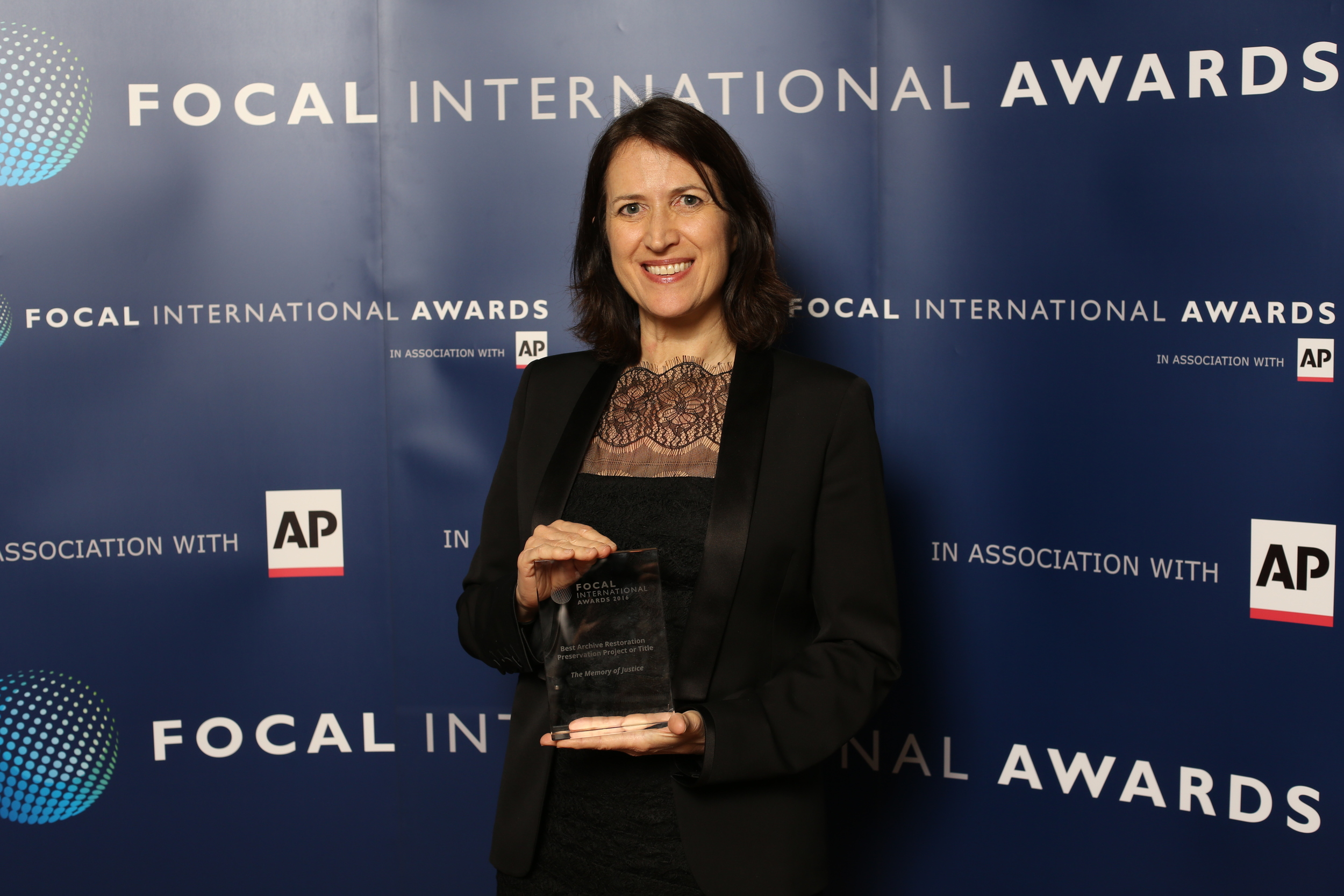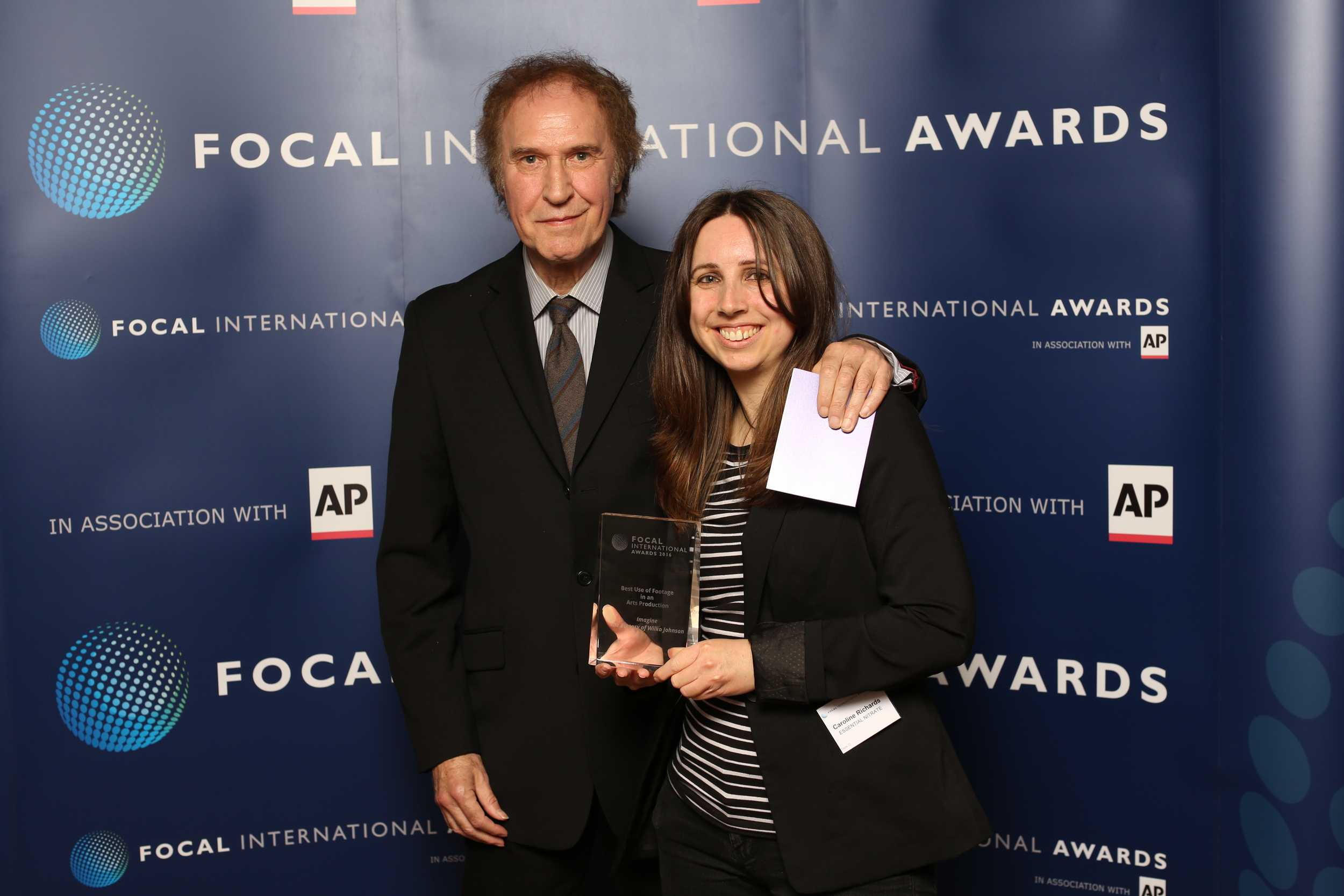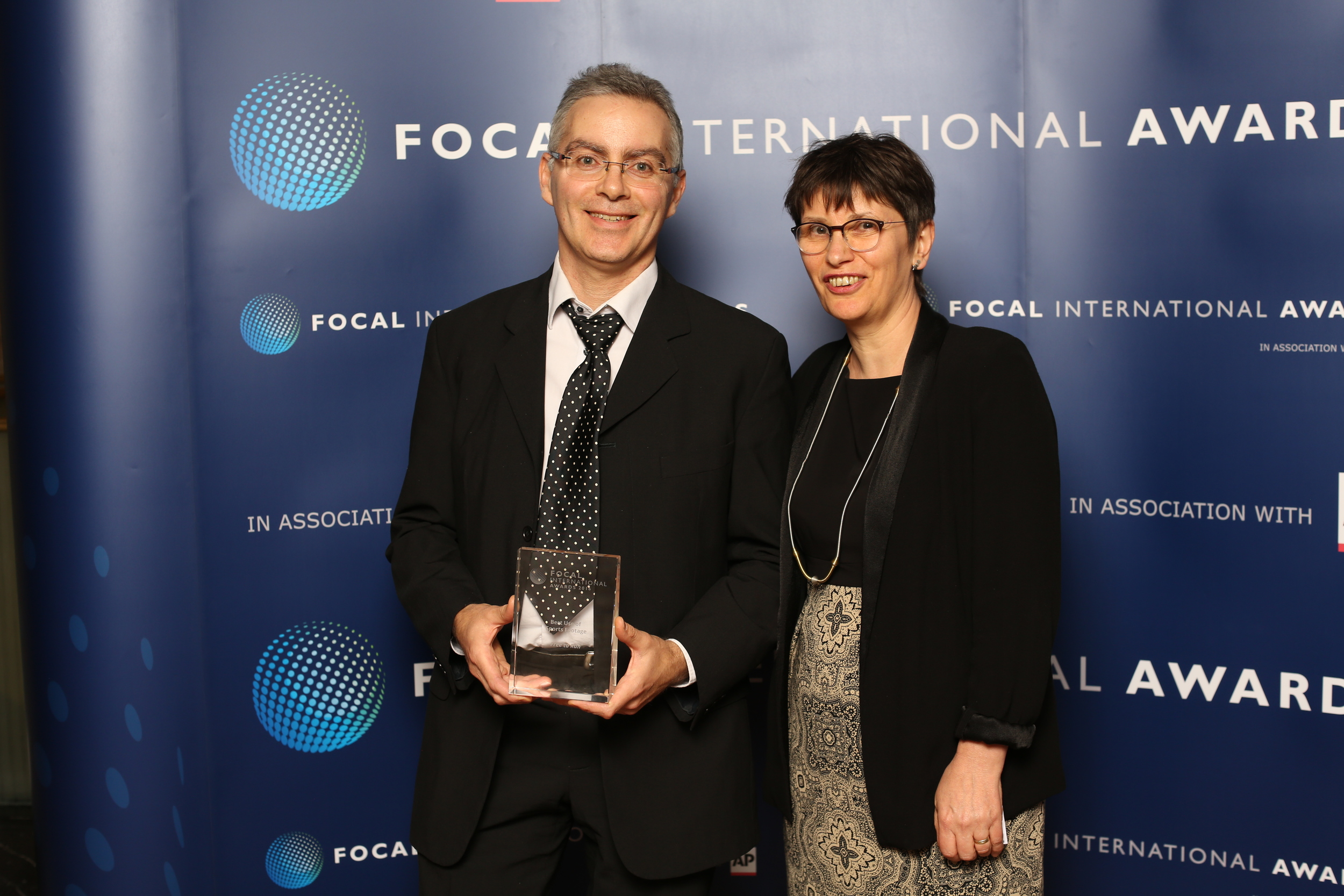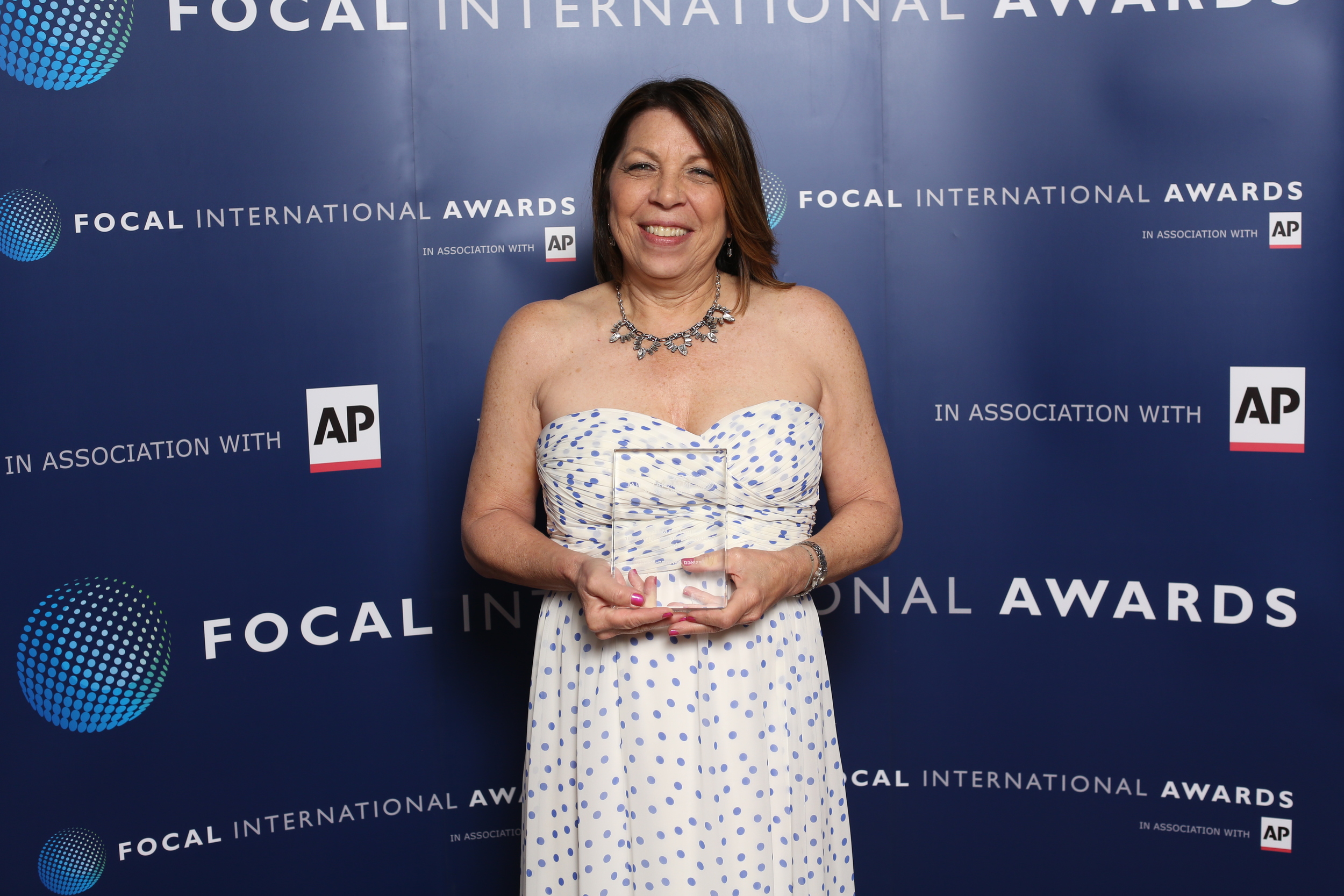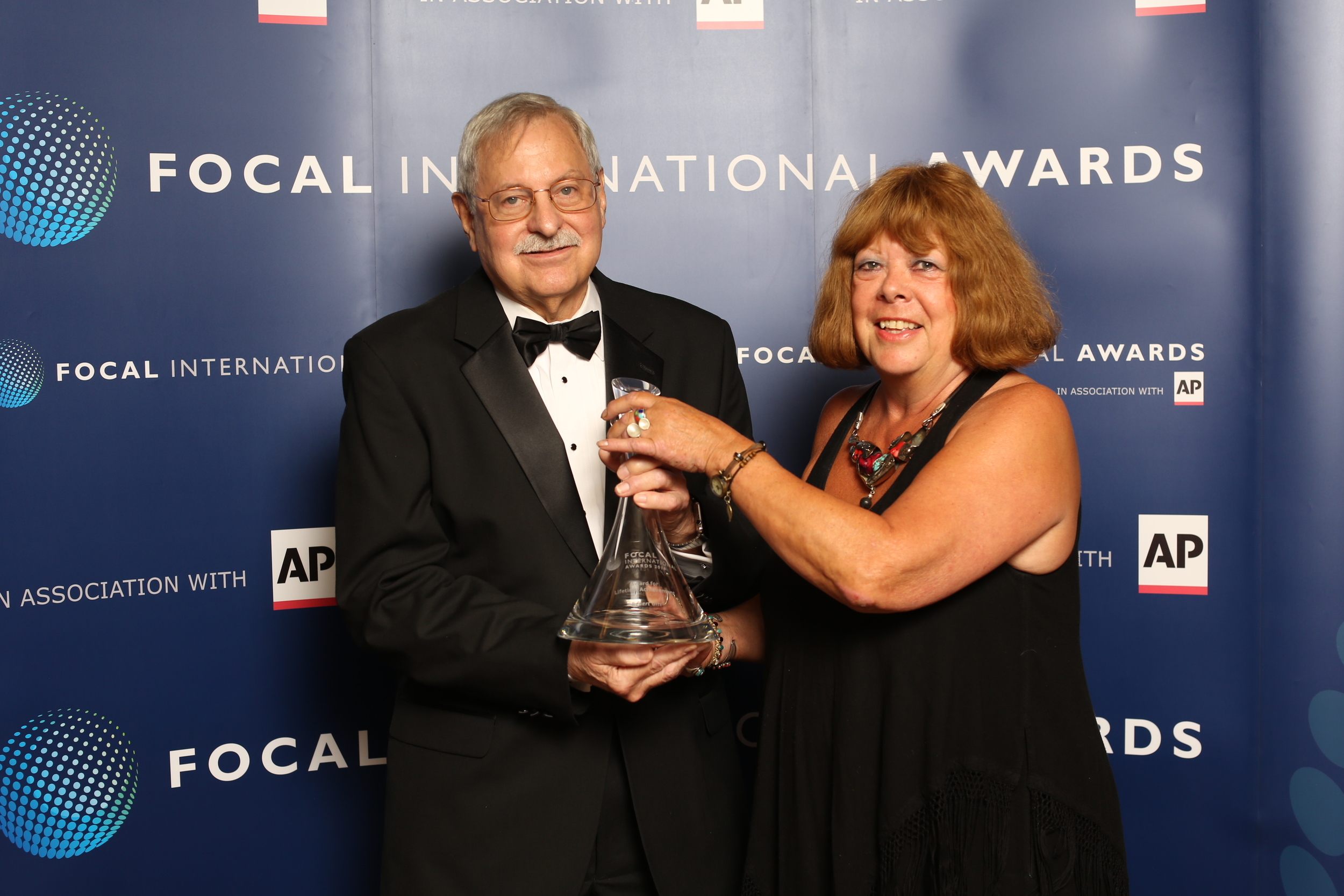YouTube: an Asset for Footage Companies?
/In our interview with footage researchers last month (A View from the Archival Trenches), archival researcher Jodi Tripi said that "everybody on the planet thinks that YouTube is a search engine and that they are a footage researcher," a reality that often complicates life for archival researchers. So this month we reached out to a group of footage industry leaders to find out how YouTube has affected their work, and whether the platform is an asset to their businesses. We got a great response from the footage community, including Scott Dittrich (Action Sports), Alan Bradshaw (AP Archive), Alastair White (British Pathe), Michael Goldberg (Celebrity Footage), Chris Bridson (Conus Archive), Jim Erickson (CriticalPast), Mark Trost (F.I.L.M. Archives), Lorena Booth (Framepool), Jessica Berman-Bogdan (Global ImageWorks), Sami Sarkis (HOsiHO), Sandrine Sacarrere (INA), Adam Sargis (MyFootage.com), Ben Jones (Science Photo Library) and Martin Lisius (StormStock). You can read their responses in full below.
Footage.net: As noted, in our interview for our February newsletter, Jodi Tripi said, "everybody on the planet thinks that YouTube is a search engine and that they are a footage researcher." Do you agree? And if so, what are the implications for the footage industry in general and for your business in particular?
Mark Trost (F.I.L.M. Archive): Jodi is spot on. Just about every day we get an inquiry from someone whose higher up (usually a director, sometimes a producer) saw a clip on YouTube and wants to know if we have it or can supply something virtually identical. Overall, I think it helps shops like ours, as it does drive people to us when they have trouble tracking down the person who posted (who usually has no rights to the footage). As a catch-all video depository, I see it as a net plus both to us and researchers. There is also a lot of rare material up there that would otherwise never surface.
Alastair White (British Pathe): Yes of course YouTube is a search engine and we should all accept this. It is the industry’s primary video platform with thousands of new videos uploaded every day, so it is human nature to start off your search there. It is the responsibility of the industry to try and ensure this platform works to our benefit, because it is not going away. We understand that only a small proportion of viewers are potential licensing customers, but the numbers are so large that even a small percentage is a large figure.
Jim Erickson (CriticalPast): We agree to some extent that frequent use of YouTube has “dumbed down” footage research. That said, most of our business still comes from Google text-based search results. Either way, we find ourselves constantly adjusting our business to suit the whims of Google, whether to satisfy text-based search or YouTube search. As long as Google remains basically unchallenged by competitors, this will be the state of the industry.
Chris Bridson (Conus): Researchers using YouTube as a “search engine” has become ever more evident. Being part of a business that deals with archives, I have heard from researchers attempting to source video found on general internet sites can be very challenging. As anyone and everybody can post clips, many that they don’t own rights to, it can be very challenging for researchers to source material. Many times this workload is passed down to archive houses, to assist in determining if something exists within their holdings. We would prefer to get the research requests directly, spending our time to find the best material to pitch within our own collection. In the end, we feel this saves our clientele time and in the end, money.
Ben Jones (Science Photo Library): I agree on both counts. YouTube is a search engine, one of the most popular, and whether people look for Kanye, cats or epic fails, it’s hard to argue it’s not footage research to some extent. Of course, footage research as we know it entails a lot more than search engines, and the vast majority of YouTube videos don’t mention much about copyright, licensing, access to uncompressed versions and all the other facets of our work. However, as a wildly, rightly, popular site it’s impossible to ignore its impact. For archives it’s a great source of interaction with clients, contributors and the wider world. For creators and rights owners it’s a showcase and a shop window as much as it’s a sea of pirates, and can generate revenue as well as publicity. For researchers it can often be the first port of call, the start of a long journey to licensing the clip they need. But while the visual history of film and television remains off YouTube, legally at least, it won’t replace the expertise of traditional researchers, nor the archives that preserve such content.
Sandrine Sacarrere (INA): We have more and more footage requests with just a YouTube link. It is quite complicated for us to identify the footage spotted on YouTube because Ina has more than 1.5 million hours of programs online. In that case, we need to do a deeper search in our database to have access to the content requested by the client. It takes us more time to process that way.
Sami Sarkis (HOsiHO): We do have a YouTube channel but we don’t push it that much. It’s here for our showreels. We haven’t yet seen any evidence of business coming from YouTube. In the future we’ll probably upload more individual clips to YouTube and see what happens. We are using many social media sites, and the most efficient in terms of visibility and driven traffic are LinkedIn and Facebook, according to our records.
Adam Sargis (MyFootage.com): Yes that is the impression most people have. I also use YouTube as a research tool, but reluctantly as it is mostly non-professionals posting the content: it is often impossible to contact and/or get a timely response from the person who posted content. Most of time they don’t own it and have no right whatsoever to it. The footage industry can only benefit from the free exposure and any user who wants to license footage may be delighted to find that it is an established footage house posting.
Martin Lisius (StormStock): Almost anyone can do some research on-line. But, not all data is out there. Veteran researchers like Jodi Tripi, Roxanne Mayweather, and Chris Lutz have acquired and developed trustworthy sources directly for material. Their clients demand high quality footage that is properly cleared. So, if you want to do it right, you really need to hire a professional. Would you skimp on a director or cinematographer? If quality is important to you, then you can’t skimp on a researcher. They can save your ass!
Scott Dittrich (Action Sports): I agree with Jodi. You tube is not a search engine for stock footage, nor should it be.
Michael Goldberg (Celebrity Footage): I would certainly say that the younger people do believe that it is an asset to them to search for footage. It is certainly one of the steps that young people take to find something. The hard part is how do you clear it?
Lorena Booth (Framepool): YouTube does act as an unofficial search engine and people looking for footage tend to use it as a content search engine. The problem is that they are not fully aware of the quality restrictions as well as the copyrights involved. Licensing from YouTube can go either way, very fast and easy for simple stuff, or very slow and complicated when the desired video requires third party clearance. As footage experts, we have to be prepared to educate the client on the implications of licensing YouTube material, which can potentially cause unforeseen project delays.
Alan Bradshaw (AP Archive): Over the past few years we’ve certainly seen a change in how our customers approach us in terms of buying footage. Increasingly editors, directors and assistant producers source their content from YouTube first before calling in an experienced archive producer toward the end of a production to clear the footage. Trying source copyright on YouTube is a minefield and often the archive producer has to frantically replace shots with known archives in the edit due to time constraints.
FN: What is your YouTube strategy? Do you have a dedicated channel for your footage business? If so, what sort of content does it include? Is it driving inquiries?
Alastair White (British Pathe): British Pathe’s YouTube strategy is well advanced. 3 years ago we recognized the power of YouTube and uploaded the entire British Pathe archive, 85,000 individual films; this was the largest single upload in YouTube’s history. We have a number of YouTube channels, which currently have over 540,000 subscribers. We also produce a number of new films each month to encourage viewership and subscribers.
Alan Bradshaw (AP Archive): We noticed that a lot of AP News content was being uploaded to You Tube by members of the public without our control and without AP being credited for the content. So in 2014 we made the decision to up load our entire archive to the YouTube. By having our whole archive sitting on YourTube’s servers we are able to take advantage of their content ID system, which allows us to control what happens with AP copyright video on YouTube. The upload was one of the largest in YouTube’s history and when completed 1 million minutes of video had been published! For us it’s been a great marketing success and allows people to find our content easily with clear instructions on how and where they can license our video. By including our metadata with the video, it’s vastly improved our SEO on Google, making us far more visible to potential new business. We initially launched on YouTube with two channels, AP Archive and British Movietone, but since acquiring the British Movietone archive at the end of last year we’ve now launched a specialist channel looking at royalty around the world. We have more channels planned too over the coming year.
Lorena Booth (Framepool): We consider YouTube as an asset rather than as a competitor. Clients who do not yet know Framepool, will stumble upon our footage while on YouTube and come back to our site. Therefore YouTube is treated as an additional way of generating business and bring awareness to our brand and business. We have different channels and playlists where the client can be led back to our page and also show what our collections are all about. Our channels cover all content we offer - historical, editorial and creative. As well as special playlists highlighting projects where Framepool footage has been used. [It is driving inquiries] both from large and small clients.
Chris Bridson (Conus): Years ago, we started to use YouTube to highlight a special collection of “caught on tape” material, CaughtOnTapeTV, which was initially designed for our International clientele that were frequently using the site to find clips. More recently, we created a new channel to highlight the entire OJ Simpson criminal trial, OJ Trial Uncut. We found YouTube to be the perfect venue to post long clips that researchers can easily access. Should they have a licensing need, the footage is clearly identifiable as being ours, and researchers can record specific time code information that will match our master. Both channels have proven popular for researchers and have driven inquiries.
Jim Erickson (CriticalPast): We have a YouTube channel, and our strategy with it is to simply have a wide representation of our collection on it, well watermarked. The channel drives inquiries, although oftentimes the inquiries are from consumers, not professionals. We try to filter out items that might not be suitable for all ages. That’s sometimes difficult, given how much war-related content we have. YouTube has placed a small quantity of our clips behind an 18+ age filter, but those clips remain accessible.
Ben Jones (Science Photo Library): We have a dedicated channel at youtube.com/sciencephotolibrary, and we post highlights, new collections, striking clips and more. Many of our contributors have their own channels too, and pass us any requests they get from the public or clients. Our own channel doesn’t drive sales as much as it’s a brand awareness tool, and a convenient embed facility for other social sites. Our contributors’ channels certainly drive sales to us, although for every sale there are dozens of people with interest, but no budget, of course.
Mark Trost (F.I.L.M. Archive): Yes, we do have a YouTube channel that features a subset of the screeners we have on our website. It definitely puts the footage in front of a great many more eyeballs than would see it on our website. We generally get a least a few sales a month from clients who see the footage on YouTube and want to license.
Sandrine Sacarrere (INA): In March 2012, Ina and YouTube concluded a partnership allowing Internet users to get free access to a part of the INA audiovisual memory. This agreement covers the broadcasting and monetization of 70,000 Ina videos on YouTube. This initiative responds to a common desire to make accessible to all, the French audiovisual heritage. It permits Ina to share its memory with millions of Internet users of all ages and nationalities browsing videos on YouTube each month. Ina has now 28 dedicated channels on YouTube for the general public only, not for footage business. These are thematic channels (Politics, Paris Vintage, Society, Best of Classic, Travels, Sciences, History, Animals, Humor, Performances, Culture, Talk shows, Best of 60’s, best of 70’s, Best of 80’s, best of 90’s etc.). To date, Ina has 270,000 subscribers for all its channels. In 2016, 84 millions Ina videos were seen on all its YouTube channels.
Adam Sargis (MyFootage.com): Post much as possible. We have a dedicated YouTube channel including all content we have in both short clips and long form. Yes, it is driving inquiries.
Martin Lisius (StormStock): StormStock does have a YouTube channel. It features some of our more dramatic material. We do occasionally get inquires via YouTube searches, but they tend to be small jobs, projects with small budgets.
Scott Dittrich (Action Sports): I totally ignore YouTube. Those who use it say it is a waste of time and only attracts the lowest budgets.
Michael Goldberg (Celebrity Footage): We have a YouTube channel with around 2700 followers. Every time we cover an event we put together a 2-3 minute highlight reel that showcases the best of the event and the biggest celebrities there. Then we blast that video out to all our clients and our social media sites, and pushing that video out to YouTube is just one more step in our routine. We’re producing those videos anyway, so it is not extra work for us. We just have to upload the file using a special compression because it does have all that watermarking on it. We do want people to appreciate that quality of it so we upload it in HD. We believe that YouTube is just another search tool that some of these young people will do a search on, so it is just one more outlet that we’d like to cover. We put all the people’s names [from the event] in the metadata so it helps make it searchable. And that is also where we host our videos for social media platforms, meaning that when we put something out on Facebook or Twitter, YouTube is the place where the video is hosted. It isn’t costing us anything to do it and the hope is that we either get revenue from a license or the advertising that is associated with it. The reality is low, though occasionally we do see some spikes. Our clip of Kim Kardashian getting flower bombed got over 168,000 views. We did a video on Adam Levine’s star on the Walk of Fame, which got over 30,000 views. We did an event for a pre-Grammy party that got over 20,000 views. I think somebody embeds it in a social media capacity and it gets shared and I think that is how that quantity of views happens.
Jessica Berman-Bogdan (Global ImageWorks): Yes, Global ImageWorks has a dedicated YouTube channel. We have a representative sampling from across our various collections and have a targeted marketing plan to include YouTube. We have found that over the past few years YouTube has become an effective tool in the arsenal for business-to-business marketing. It has become a way to connect us with new clients. Between 20% to 30% of our collection is represented on our company’s YouTube page, organized into thematic demo reels as well as many stand-alone clips based on specific collections or topics such as historic travel, global conflict, 9/11, automotive history, world cultures, or sample reels from our premium collections such as The Dick Cavett Show, Austin City Limits, Harold Lloyd or Omnibus.
FN: Are you getting calls from people who have found a clip on YouTube and believe it belongs to you? How do you handle these inquiries? Is this a good source of new business?
Ben Jones (Science Photo Library): Not usually from the public finding our site or our clips, although it’s happened on occasion – we’re not an archive of record per se. It’s far more common that people see clips on our contributors’ channels, contact them, and then are passed to us by the contributor. Most vanish with nary a reply when they get an email from an agency that talks of licensing and the like, but a significant minority do turn into sales.
Lorena Booth (Framepool): Yes, we do. Whenever clients come across something which leads them back to Framepool, we either license and deliver the clip right away or act as the facilitator to clear any third party rights or perform additional research to fulfill their needs. [Is it a good source of new business?] Yes and no. It does bring new business from small companies or small clients acting like a B2C. Not a great source of new business because YouTube is a huge content cloud not meant as a footage search engine therefore it becomes somewhat difficult to narrow down the search to a particular subject.
Martin Lisius (StormStock): Funny thing is folks will see footage on the YouTube StormStock channel and then ask us (StormStock) if it’s ours. Naturally, we say yes. Only a tiny percentage of jobs come through YouTube. Footage.net and professional researchers are far more important to us.
Alastair White (British Pathe): Yes, we get enquires everyday from customers who have found one of our films on YouTube and wish to license it. It is a particularly good source of new customers from overseas who may not be so familiar with the British Pathe archive.
Chris Bridson (Conus): It’s not common, but on occasion, we have received an inquiry regarding a “caught on tape” clip that they have found on other Channels and ask if it’s ours. Due to the infrequency, this is not a good source of new business.
Jim Erickson (CriticalPast): We get regular inquiries, usually through the contact form on our web page. It is a good source of new business. Usually, we just refer the person to the clip in question as hosted directly on our site rather than on the YouTube channel.
Mark Trost (F.I.L.M. Archive): We handle the sale as we do any other. If they email us about the clip, we ask how it will be used and the duration of the license. About half respond and it usually turns into a sale. Overall, a good percentage of those who come to use from YouTube tend to be independent producers and students with lower budgets. So, we tend to get somewhat lesser rates, but a sale is a sale.
Jessica Berman-Bogdan (Global ImageWorks): Yes quite often. In addition to our continuing to upload more footage all the time, several of our footage partners have their own YouTube pages and include links and notes referencing Global ImageWorks for anyone interested in licensing clips. With more researchers using YouTube as a primary source, the goal is to insure all stand-alone clips are watermarked and can be referenced back to us so they can be easily licensed.
Michael Goldberg (Celebrity Footage): It’s hard to say. When we get a referral we try to ask them where they found us and it’s rare that we hear it is from YouTube. I don’t how much it generates in terms of sales or legitimate licenses. It does certainly make people aware of our brand and let’s people know what we do. There are at least 2,700 people who have subscribed and want to know what we are shooting. Obviously we have our website connected to it so there is a way to find us and reach out to us. But I don’t have an answer to that because I don’t have enough customer feedback. There are a handful of times when someone has shared a YouTube link with us and asked if we had anything like it. We find it and send it to them. Usually we’ll have something that is similar or better. It does not happen a lot. I’m sure you see on Footage.net sometimes people will just embed a YouTube link and ask whether anyone can tell me what this is or tell me who this belong to. Or can someone find me something like this? So they use it as an example.
Sami Sarkis (HOsiHO): It happens sometimes and we drive them to our main site.
Sandrine Sacarrere (INA): Ina footage on YouTube has a burnt-it logo so it is quite easy for audiovisual professionals to identify Ina as the rights holder. We only handle the inquiries for which the clips belong to Ina. YouTube could be one of the sources of new business because more and more audiovisual professionals use this platform to find their clips (quicker way to find the footage they are looking for). But, to date, Ina does not use YouTube as a professional platform.
Adam Sargis (MyFootage.com): Yes. I try to determine if the caller has a budget to afford the clips they want. Is it a good source of new business? Yes and No. If the sale is automated, yes. But mostly non-professionals and students respond. They are usually shocked at the prices, even when discounted, and require some amount of educating about buying footage. Many of the YouTube generated interest are time wasters, however.
Alan Bradshaw (AP Archive): Each video that we publish on YouTube has a direct link back to the same video on aparchive.com. This makes it very easy for anyone interested in licensing our content to do so without fuss. It’s been a great source of new business especially with customers who wouldn’t traditionally buy video.
Scott Dittrich (Action Sports): No.
FN: Overall, has YouTube been a positive factor for your footage business? Why/why not? What are the risks?
Chris Bridson (Conus): YouTube has been a positive factor, but using the site is not a major part of our business model. We prefer to focus our resources on making it easier to find footage within our own collections of material. While 90% of our clips have screeners posted to view and download off Footaget.net, we are working hard to close that gap and get as much as possible online for researchers to view. In addition, we are constantly adding metadata to our scripts, making it easier for both ourselves and our clientele to find that perfect clip.
Ben Jones (Science Photo Library): I’d say it’s been positive. Even without the publicity and sales/marketing aspects, it provides a very easy to use service for the dissemination of content across our social channels – being able to embed videos from YouTube into Facebook, etc. is a great help, saving us making different formats for every platform. It provides decent statistics and analytic tools, too, making it easy to measure the reach and effect of different topics and styles of video. I’ll be uploading a very different-style video after answering these questions, in fact, and I’m intrigued to see the responses. On the response point, it’s a truism of the web, sadly, but really: don’t read the comments! We leave them on for interaction and genuine questions, but on a popular video they can fill up with rubbish fast. We posted an animation comparing the sizes of the planets and stars that quickly turned into a slanging match between religious and anti-religious types, interspersed with people who still get a kick from puns on “Uranus.” We’ve maybe been lucky that we’ve not had anything to date that’s reflected badly on us, and we try to respond to genuine questions and enquiries quickly. Some videos we’ve posted have been picked up by media aggregators and shared on their sites, which has driven interest and interaction, and has been good publicity, leading to big spikes in subscribers, as well as contact with the aggregators themselves. On the downside there’s always a risk that someone will rip a video, block the watermark and try to monetize it themselves. It’s happened a couple of times that we know about. That doesn’t look good for us or the contributors, but they have improved reporting and other tools.
Jessica Berman-Bogdan (Global ImageWorks): My answer today is different from what it might have been a year or two ago. YouTube has become a primary search engine for experienced researchers but it is only one of the tools of finding footage. Experienced researchers understand that YouTube is not always the most accurate way to source copyright or ownership but it is a great way to find what might be available. However as more footage companies embrace YouTube, it is a growing way for people to find legitimate licensing channels for footage. The risk is that many inexperienced researchers do not understand that YouTube is not the be all and end all to finding footage and that too often the sourcing and copyright information may be inaccurate.
Michael Goldberg (Celebrity Footage): For our business it is more positive than negative. People do find us on YouTube, so overall it is an asset. I do think it is a much more business to consumer platform. But I do think when people do searches they have found us on YouTube and then come to us to license something. It makes people aware of our brand and what we do. And the subscribers get notified when we post something new.
Alastair White (British Pathe): Overall, it has been a positive factor in our growth; we have seen a doubling of our overseas business. There are some risks involved such as pirating of footage, but our belief is that most serious producers would not risk ripping off a video to put into their program to then deliver to a channel (and warrant that the program is fully cleared), they would prefer to license it legally through us to ensure they are fully covered.
Martin Lisius (StormStock): I think our YouTube channel has been positive, but it really only generates a very small part of our business.
Jim Erickson (CriticalPast): YouTube has been a positive factor for our business, but we wish that Google would return to showing more video search results that are not from YouTube within the Google search engine. They used to show more video search results outside of YouTube, but have pretty much abandoned that practice. The risk with YouTube is that it is yet another layer that completely controls our Google video search results.
Mark Trost (F.I.L.M. Archive): Yes, very positive. Only downside is you do get a fair number of inquiries from people with no budget at all who want the footage for free.
Sami Sarkis (HOsiHO): I don’t think there’s any risk if the footage is well watermarked. It might be a good source for our business, but not yet! For us it is more another way to advertise our content in general. The limitation is that it needs a lot of time, thus resource and costs if we intend to have a significant portion of the collection up there!
Sandrine Sacarrere (INA): Ina does not use YouTube as a professional website.
Adam Sargis (MyFootage.com): Yes, YouTube is important to us. I think that those in the entertainment business would recognize that we are a footage company. We can post almost everything. We are able to monetize most of our content and get monthly YouTube payments. The burn-in time code we use is abbreviated, without the frenetic frame count, so that the content is more watchable as entertainment. [Risks include] take down notices made by psycho claimants for music and content. Getting copyright strikes. 3 times and you may be out. People use the clean portions, free, and blur or crop the logos and time code. It is my feeling that those people would not have bought the content in any event.
Scott Dittrich (Action Sports): No.
Lorena Booth (Framepool): Yes it has. It has allowed for Framepool to use it as an additional platform to highlight its content, services and expertise. The risk is having our footage being used without the proper licensing and authorization by people who may be unaware of the licensing requirements for legal use.
FN: How do you protect your content on YouTube?
Jim Erickson (CriticalPast): We overtly watermark content that is on YouTube. YouTube consumer feedback (from viewers outside the pro industry) suggests that they absolutely hate the practice, but we know from long experience that this is a necessary protection tool. We’re continually amazed at how poorly our competitors protect their content. It does not bother us when consumers cast “Thumbs down” votes on our videos due to our watermarking, because we are not interested in driving up non-pro viewership, and we’re not trying to use YouTube as a major advertising revenue driver. We only want our videos to be found by the “right” viewers: Legitimate researchers licensing for the professional industry. That kind of customer is not bothered by overt watermarking.
Martin Lisius (StormStock): We watermark our material on YouTube. We did ask YouTube if we could join their copyright protection program, but they said no. We will continue to pursue that. I think it would benefit both parties. It would help to protect our copyrighted footage, and would further illustrate their commitment to protection and the DMCA.
Sandrine Sacarrere (INA): Ina is very careful about the protection of its content on YouTube. It has a dedicated Legal Team whose role is to control any piracy of its content. Ina uses the filtering technology used by YouTube, Content ID, which is free to the rights holders. This technology allows them to identify and manage Ina content uploaded on YouTube. Identification files are created and compared to users' videos.
Alastair White (British Pathe): All our films are branded with the British Pathe logo.
Chris Bridson (Conus): We add either a watermark and/or a BITC window to our clips, which will identify the clip as being ours and discourages any outside, unauthorized production use. Nothing goes up clean.
Jessica Berman-Bogdan (Global ImageWorks): All footage we have uploaded to YouTube must be watermarked, timecoded and tagged as being from Global ImageWorks. Content ID is a good attempt by YouTube to help with copyright and sourcing but oftentimes it has also created problems when there might be multiple copyrights or conflicting copyright interests – ie. multiple copyright interestsmight exist when there are both the physical clip rights and separate music rights to a recording that is a second copyright or if a finished program is put through Content ID which includes legitimately licensed clips which also have been registered through Content ID- these conflicting rights situations may cause a clip to beincorrectly flagged for infringement.
Adam Sargis (MyFootage.com): I burn a large logo on the upper left and have a medium time code and user bit burn-in on the lower right or more recently centered a bit more to be in tandem with YouTube ads. So that the pop-up ad appears over the time code/user bit portion, causing the viewer less overly visual interruption.
Mark Trost (F.I.L.M. Archive): We place the same time code and company ID burn in into the footage. So, it would make it difficult for someone to use it in any kind of professional project.
Ben Jones (Science Photo Library): Mainly through watermarking, and top-and-tailing the video with our name and website.
Michael Goldberg (Celebrity Footage): We originally thought theft was an issue, so at the bottom of every video we post it says “License this Clip and More at CelebrityFootage.com” and it has a watermark on it. Because people have no problem taking YouTube footage and doing what they want with it. Which is why the watermark and the line at the bottom is there, because a lot of people fair use that stuff. Or try to. Once they see the watermark, a legitimate outlet, I think, that would scare them away from that. We are obviously happy to negotiate a reasonable license fee for that, but that is what makes us feel okay about it. Because at the beginning we knew people would just steal stuff from it. We supply footage to online platforms and people post that onto YouTube. So we need to do some enforcing on that. We do our own research and try to monitor people using our stuff. People do repost stuff on there all the time. We do a lot of policing daily, obviously separate from YouTube. We watch a whole host of shows and online platforms. Theft is everywhere. Even with the biggest companies. You’d be amazed. The news departments have just hacked their staff so far down that they just have no incentive, they just work off of complaints. If somebody wants to make a claim they just try to make it go away quietly.
Lorena Booth (Framepool): All content is watermarked for additional protection.
Scott Dittrich (Action Sports): I don't’ post it there.
FN: If you have found YouTube to be an asset for your footage business, are there any limitations to its utility?
Lorena Booth (Framepool): As mentioned earlier, it is an asset but the majority of YouTube users are there to watch videos and expose their content just like us rather than to buy footage therefore not much revenue is generated from this particular source.
Ben Jones (Science Photo Library): Its sheer size is something of a barrier to utility, as there’s so much content there that we’re a mere drop in the ocean: we don’t get many views from organic searches, however we keyword our work. As with the rest of the web, it’s not always easy to find rights information or the ultimate owner of the footage, nor contact details. Their algorithms sometimes cover our videos with adverts for services we’d never endorse, although I should say they’ve made it straightforward to remedy these. It also lacks the art and creative slant of services like Vimeo, whose more discerning users tend to offer more than slang and slanging. But I wouldn’t be without it, and we’re looking to engage more with it going forward, rather than pulling back.
Adam Sargis (MyFootage.com): Although users can search only the videos on your channel, you cannot easily search the Playlists that are like the old subject related comp reels we used to dub and send to clients. This was an easy first response to a request, which is followed by a more specific research and audition clip delivery. There is no way to sell or vend clean files via YouTube, at the moment. Vimeo Plus is a good alternative, but my library is too large to have them host all.
Chris Bridson (Conus): YouTube has been an asset. One drawback is the occasional challenge of copyright claims from other production companies. Ironically, most of these claims come from productions to which we originally licensed the material in question. I understand these claims are most likely auto-generated and are cleared up after filing a dispute, but it’s just another task to add on to the daily workload.
Jim Erickson (CriticalPast): For us, the primary limitation of YouTube is the sheer size of the service, which causes it to be administered mostly by bots rather than humans. That means that we constantly have to respond to problems flagged by algorithms, which usually result in paperwork (online form responses) that may or may not be adjudicated by a human. The biggest problem we have with YouTube is the constant daily attention it requires of us, coupled with the sense that someday HAL will randomly refuse to open the pod bay doors.
Mark Trost (F.I.L.M. Archive): The major downside is that you are throwing the stuff out there to the world and much of the world doesn't realize they have to pay for use (especially if they want clean material). Some are surprised, others just go away and we suspect they take it down and use it as is. But since they can do the same thing from our website, there really isn't much of a downside. Overall, a highly useful tool for us and the client.
Martin Lisius (StormStock): The upside to YouTube is it allows for some free exposure. But, it is limited as a source for business because it’s not the ideal audience. Stock footage is very niche. There are only a tiny percentage of people that need it. YouTube is an on-line general audience video network for people that want to see music videos, how-to videos, entertainment, celebrities, and videos of dogs running around in circles chasing their tails.
Sandrine Sacarrere (INA): Ina does not consider YouTube as an asset for its footage business. Ina has its own professional website, www.inamediapro.com, allowing clients to carry out research in the whole of its audiovisual database, view the footage online, create clips, download low res footage etc.
Michael Goldberg (Celebrity Footage): Because it is so big, if you search Matt Damon, I don’t know if we would come up. You’d have to search something more specific, like what event he was at or something connected to it. We’d obviously appear if you were to type “Ben Affleck Footage” or a term that was more in our world, CelebrityFootage is in our domain so that helps us get to the top a lot of time on searches.
Jessica Berman-Bogdan (Global ImageWorks): It is impossible to monitor all the illegal clips that are up on YouTube. No sooner do you locate one and have it taken down, then it is either back up or someone else has put up another of your clips. So to a certain degree we in the footage licensing business have become somewhat resigned to the fact that some of our content will end up on YouTube without permission.
Alastair White (British Pathe): Our preference is still to drive customers to our own website, as they then have a range of enhanced privileges such as low resolution downloads, etc., but once we have made contact with the new customers we can explain this to them. That said when we analyze our visibility each month we take into account all our digital platforms including our own website, YouTube, Facebook, Twitter, Linked In and all the other social media platforms.





